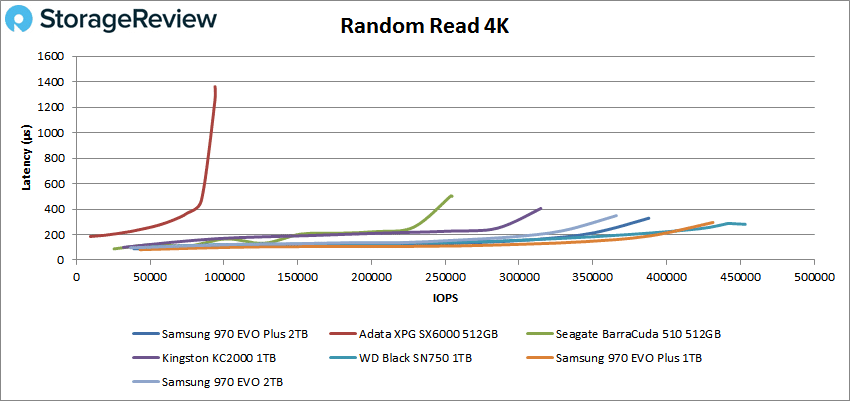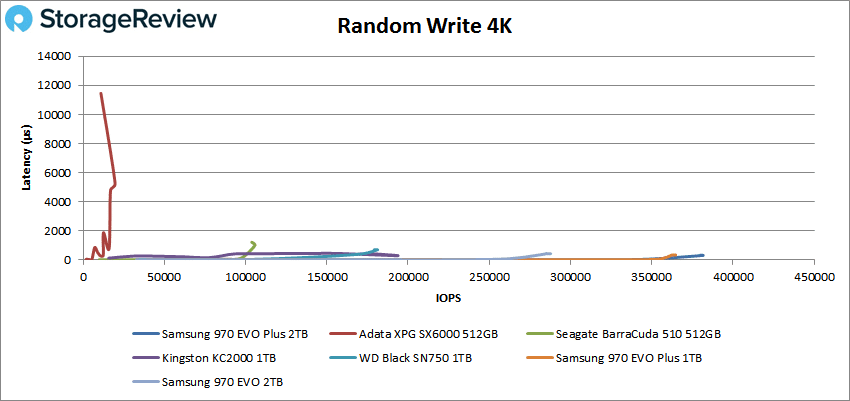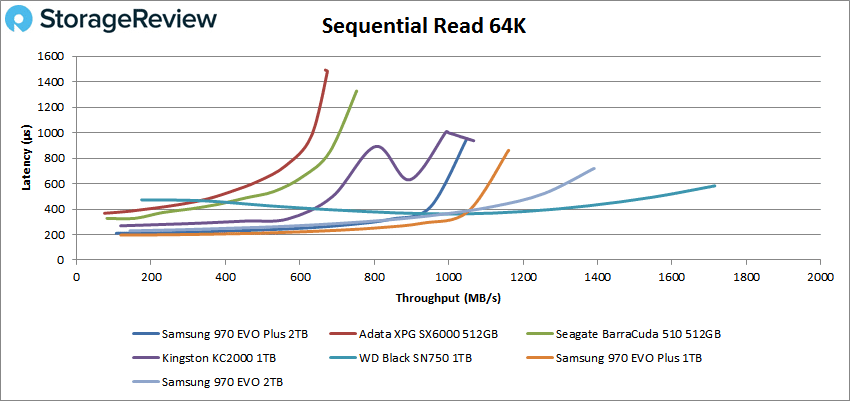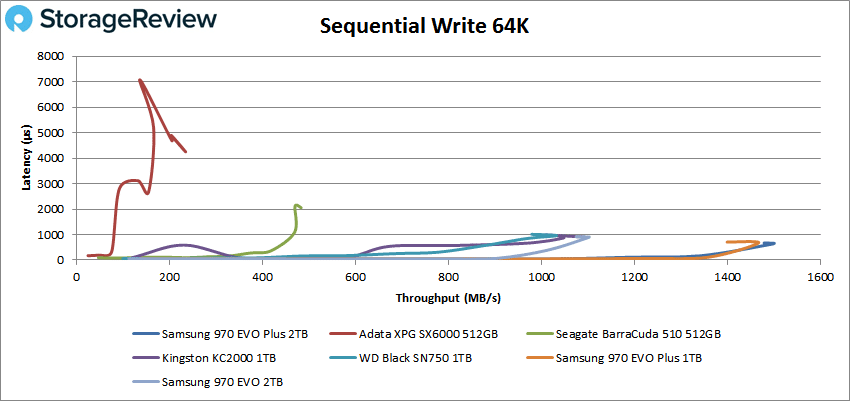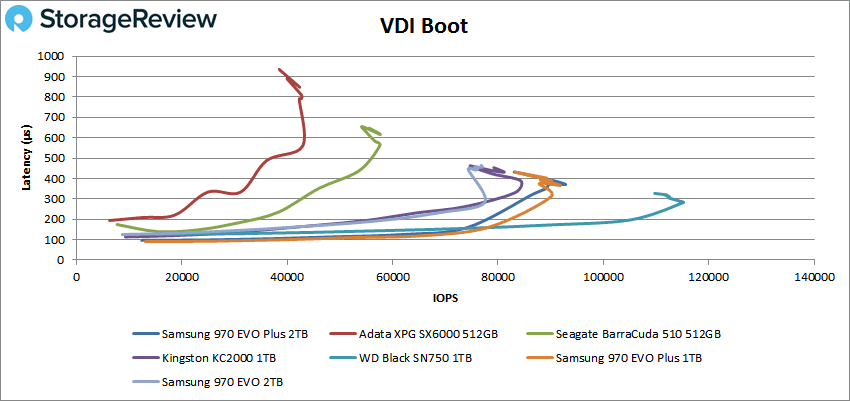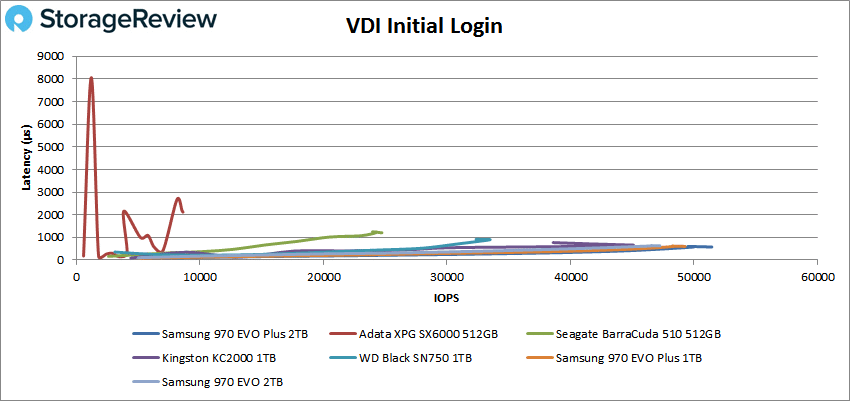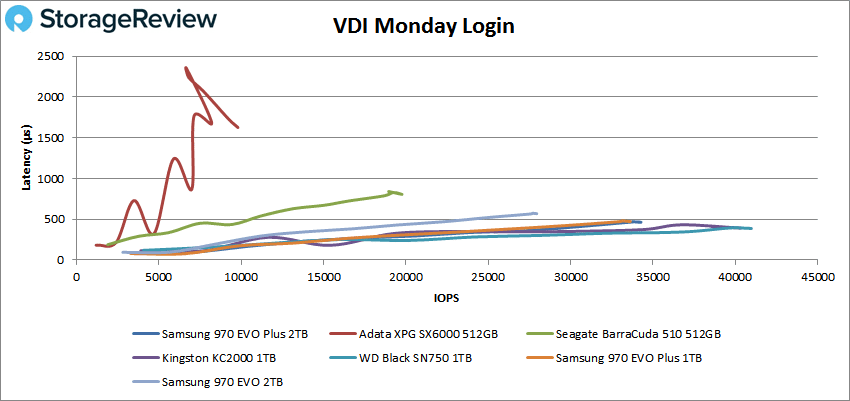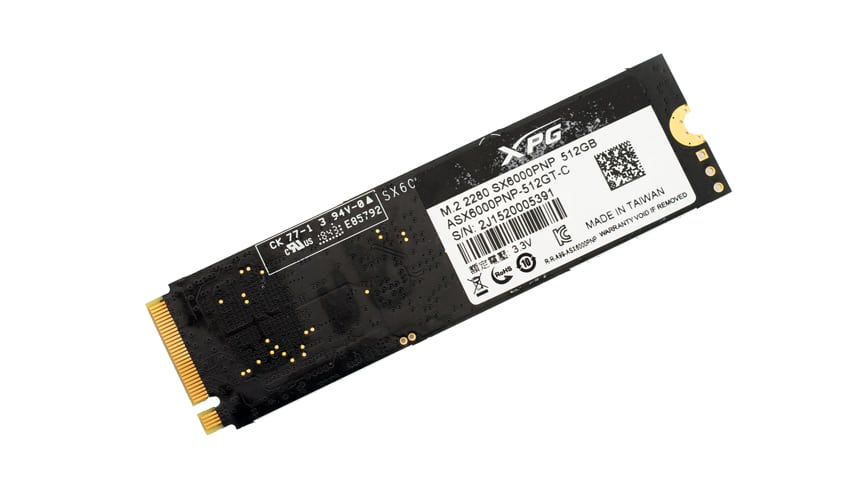
The ADATA XPG SX6000 is the latest in the company’s line of M.2 PCIe SSDs. The drive is touted as being a better performer at the same costs, or offering a better cost-performance ratio. The drive comes in a M.2 (2280) form factor and leverages PCIe3x2 interface (NVMe 1.2 supported). The drive utilizes 3D NAND that gives it quoted speeds of 1GB/s read and 800MB/s write.
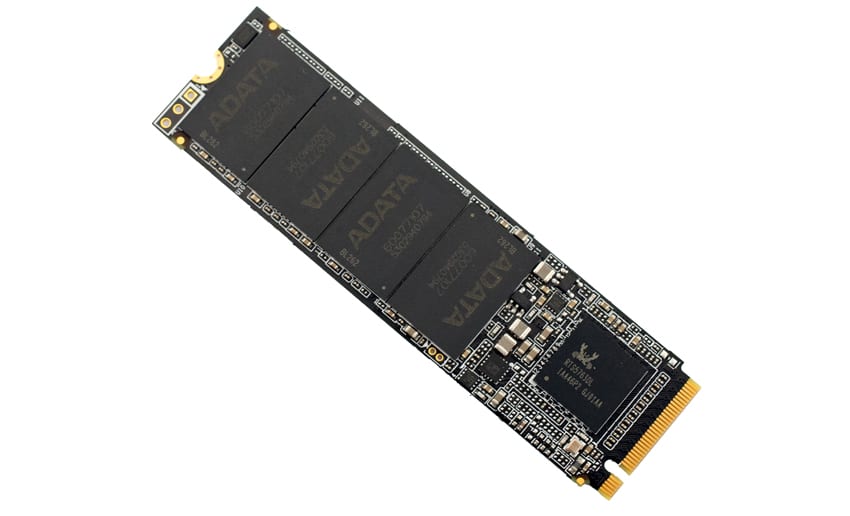
Primarily the SX6000 is ideal as a SATA upgrade. Ideal for gamers, PC enthusiasts, and video rendering professionals that are looking for a bump in performance for a reasonable price. The drive supports SLC Caching and DRAM Cache Buffer to help maintain optimal performance during heavy use. The drive comes in capacities ranging from 128GB to 1TB so users need not choose between a performance bump and a loss of capacity. And like other ADATA products, the SX6000 comes with an optional heat sink.
The ADATA XPG SX6000 comes with a 5-year warranty and the 512GB model (the capacity we are looking at in this review) can be picked up for as little as $135.
ADATA XPG SX6000 Specifications
| Capacities | 128GB / 256GB / 512GB / 1TB |
| Controller | Realtek |
| NAND Flash | 3D TLC |
| Interface | PCIe Gen3x2 |
| Form Factor | M.2 2280 |
| Performance (Max) | Read 1000MB/s, Write 800MB/s 4K random read / write IOPS: up to 100K / 110K |
| MTBF | 2,000,000 hours |
| Power Consumption | 0.33W Active (Typical), 0.14W Idle (Typical) |
| Operating Temperature | 0°C~70°C |
| Storage Temperature | -40°C~85°C |
| Shock Resistance | 1500G/0.5ms |
| Certifications | RoHS, CE, FCC, BSMI, VCCI, KC |
| Dimensions (L x W x T) | 22 x 80 x 3.5mm |
| Weight | 8g |
| Warranty | 5 years |
ADATA XPG SX6000 Performance
Testbed
The test platform leveraged in these tests is a Dell PowerEdge R740xd server. We measure SATA performance through a Dell H730P RAID card inside this server, although we set the card in HBA mode only to disable the impact of RAID card cache. NVMe is tested natively through an M.2 to PCIe adapter card. The methodology used better reflects end-user workflow with the consistency, scalability and flexibility testing within virtualized server offers. A large focus is put on drive latency across the entire load range of the drive, not just at the smallest QD1 (Queue-Depth 1) levels. We do this because many of the common consumer benchmarks don’t adequately capture end-user workload profiles.
Houdini by SideFX
The Houdini test is specifically designed to evaluate storage performance as it relates to CGI rendering. The test bed for this application is a variant of the core Dell PowerEdge R740xd server type we use in the lab with dual Intel 6130 CPUs and 64GB DRAM. In this case we installed Ubuntu Desktop (ubuntu-16.04.3-desktop-amd64) running bare metal. Output of the benchmark is measured in seconds to complete, with fewer being better.
The Maelstrom demo represents a section of the rendering pipeline that highlights the performance capabilities of storage by demonstrating its ability to effectively use the swap file as a form of extended memory. The test does not write out the result data or process the points in order to isolate the wall-time effect of the latency impact to the underlying storage component. The test itself is composed of five phases, three of which we run as part of the benchmark, which are as follows:
- Loads packed points from disk. This is the time to read from disk. This is single threaded, which may limit overall throughput.
- Unpacks the points into a single flat array in order to allow them to be processed. If the points do not have dependency on other points, the working set could be adjusted to stay in-core. This step is multi-threaded.
- (Not Run) Process the points.
- Repacks them into bucketed blocks suitable for storing back to disk. This step is multi-threaded.
- (Not Run) Write the bucketed blocks back out to disk.
The ADATA XPG SX6000 had a score of 3,556.5 seconds placing it in the bottom third.
SQL Server Performance
We use a lightweight virtualized SQL Server instance to appropriately represent what an application developer would use on a local workstation. The test is similar to what we run on storage arrays and enterprise drives, just scaled back to be a better approximation for behaviors employed by the end user. The workload employs the current draft of the Transaction Processing Performance Council’s Benchmark C (TPC-C), an online transaction processing benchmark that simulates the activities found in complex application environments.
The lightweight SQL Server VM is configured with three vDisks: 100GB volume for boot, a 350GB volume for the database and log files, and a 150GB volume used for the database backup we recover after each run. From a system resource perspective, we configure each VM with 16 vCPUs, 32GB of DRAM and leverage the LSI Logic SAS SCSI controller. This test uses SQL Server 2014 running on Windows Server 2012 R2 guest VMs and is stressed by Dell’s Benchmark Factory for Databases.
SQL Server Testing Configuration (per VM)
- Windows Server 2012 R2
- Storage Footprint: 600GB allocated, 500GB used
- SQL Server 2014
- Database Size: 1,500 scale
- Virtual Client Load: 15,000
- RAM Buffer: 24GB
- Test Length: 3 hours
- 2.5 hours preconditioning
- 30 minutes sample period
When looking at SQL Server Output, the SX6000 drive landed at the bottom of the pack of drives with a score of 2,103.2 TPS, well below the other drives.
For average latency of the same test, the SX6000 drive hit 2,386ms, massively above the other drives for last place.
VDBench Workload Analysis
The peak 4K read performance of the SX6000 drive was last with a peak score of 93,970 IOPS at a latency of 1.36ms though the drive did have sub-millisecond latency until about 85K IOPS.
With 4K write the SX6000 again came in last with a peak performance of about 19.7K IOPS and a latency of 5ms before dropping off in performance and shooting up in latency.
Switching over to sequential workloads, in 64K read the SX6000 trailed the rest of the pack. The drive stayed under 1ms until about 10K IOPS or 600MB/s and peaked at 10,790 IOPS or 674MB/s at a latency of 1.48ms.
For 64K write the drive remained in last with a peak performance of 3,753 IOPS or 234MB/s at a latency of 4.25ms.
Next, we looked at our VDI benchmarks, which are designed to tax the drives even further. These tests include Boot, Initial Login, and Monday Login. Looking at the Boot test, the SX6000 stayed in the bottom of the pack with a peak performance of about 43K IOPS and a latency of 792ms before dropping off some and latency going up. This was the first time that the SX6000 stayed under 1ms throughout.
With VDI Initial Login the SX6000 was again last seeing a massive latency spike before dropping off to a peak performance of 8,625 IOPS at 2.12ms latency.
Finally, with VDI Monday Login, the SX6000 stayed in last place and peaked at 9,805 IOPS with a latency of 1.63ms.
Conclusion
The ADATA XPG SX6000 is an M.2 PCIe SSD aimed at being a performance upgrade from older SATA SSDs. The drive has quoted speeds of 1GB/s read and 800MB/s write and it offers both SLC Caching and DRAM Cache Buffer to help optimize performance. The SX6000 comes in capacities as high as 1TB and comes with a 5-year warranty.
Looking at performance the drive didn’t do so well in our benchmarks. In our Houdini test the drive came in the bottom third with 3,556.5 seconds. From here on, the drive always came in last place. In our SQL Server the drive had a very low 2,103.2 TPS and an incredibly high latency of 2,386ms. In our VDBench the drive didn’t fare much better with peak performances of 94K IOPS for 4K read, 19.7K IOPS for 4K write, 674MB/s for 64K read, and for 64K write the drive hit 234MB/s. The drive did not maintain sub-millisecond latency in any of the above tests. In our VDI Boot the drive did stay under 1ms but was in last with about 43K IOPS. In VDI Initial Login and VDI Monday Login, the drive his 8,625 IOPS and 9,805 IOPS respectively.
Overall, the ADATA XPG SX6000 is not a very high-performance drive, despite the specs. As an upgrade from an old SATA SSD or hard drive, or if cost is a limiting factor, then the SX6000 is probably fine. If one is after a better performance profile though, there are several better options available.
Dicusss this review
Sign up for the StorageReview newsletter





